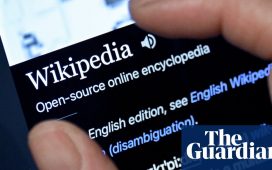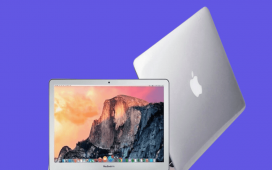In 2004, a Harvard student named Mark Zuckerberg created a website called “TheFacebook”.
The “online directory”, as Zuckerberg described it to CNBC in 2004, was initially created to connect Harvard students only. But a month after its launch, the Harvard-exclusive website also became available to Stanford University, Columbia University and Yale University students.
Now, 20 years later, Facebook is home to three billion users, including users from Yale’s Class of 2008 – some of the first people to use the site before it opened to the rest of the world.
“I don’t think anyone had the wherewithal when we were like 18 or 19 to be like, ‘Oh, this is going to be one of the most valuable companies on Earth someday’,” John Errico, an attorney and real estate investor who graduated with a history degree from Yale in 2008, said. “It really just felt like a tool for universities.”
Errico said that Facebook seemed like “the thing to do” when he started attending Yale in 2004. Fellow ‘08 Yale alumna Laura Merriman said that students mostly used the website to look up new people they’d met at parties or in class.
“You’re meeting all these new people, and we would all…be in our dorms with our suitemates looking up people,” Merriman said. “I think kind of everyone had it.”
Event emcee and speaking coach Daniel Ramamoorthy, better known by his stage name DanRam, said he remembers hearing about Facebook for the first time during the Harvard-Yale football game in 2004.
“Word was out that there was a website where you could connect with Harvard students and see pictures of their rooms and stay at their place,” Ramamoorthy said. “If you know anything about Yale and Harvard, we don’t like each other. But this platform was the first place that we actually stayed in touch before the game and continued staying in touch after the game.”
The site looked “rudimentary” in 2004, Ramamoorthy said. Zach Bucknoff, who graduated from Yale in 2008 with a history degree, said it was “substantially more limited” compared to what Facebook is like today.
“There wasn’t anything to ‘like’. There was no news feed,” Bucknoff said. “There was a home screen, but it wasn’t what it is today. It was just profiles of people you were friends with and then other people you could connect with if you wanted to.”
Bucknoff and his fellow ’08 Yale alumni said everyone used headshots or their university photos as profile pictures. Most users’ profiles included basic information, including what school they attended, what they were studying, their relationship status and their interests.
During its first year, Facebook “rolled out more features over time”, Merriman said. The “wall” feature was created in September 2004, along with Facebook “groups”.
“One of my friends actually started what maybe, for a brief time, was the largest group on Facebook. But I mean, having said that, it was like 1,000 people or something,” Errico said. “It was based on the game The Oregon Trail. It was basically people just reminiscing on how much they liked the game.”
Ramamoorthy said he remembers using Facebook early on to gather other students to make “something pretty significant”: the largest banana split they could make.
“I wanted to get everyone to come…and I (didn’t) have that many friends, and we didn’t have tools like WhatsApp and stuff. There was Facebook, and Facebook was a platform where we could dare to try something that wouldn’t happen the normal way,” he said.
Ramamoorthy said he posted to Facebook about the event, and “hundreds of people” he didn’t know showed up with ice cream toppings.
“I think at that point, I didn’t only understand the magic of Facebook, but understand the magic of what was going to come and how social media in general could be used to build tribes, to build communities, to connect with people around the world,” Ramamoorthy said.
Errico said that although social media was fairly new when Facebook was created, signing up for the site “just seemed normal”.
“There were social media things before Facebook, but the concept of social media as even a word wasn’t something on my radar,“ Errico said. “It wasn’t like a huge paradigm shift, it was just like ‘Sign up for Facebook’, like ‘Okay, no problem’.”
Facebook gradually opened to all Ivy League schools, then all North American universities, then US high schools and international schools by 2005. By September 2006, anyone who was 13 years or older with a valid email address could sign up for Facebook.
“It was just like, ‘Wow, people outside of college can join Facebook, that’s so crazy’,” Merriman said.
Merriman said that most people her age, 38, now use Instagram and barely use Facebook. The once “trendy” platform that Yale students used as a “quasi dating site” has since become a website used mostly by older people, Errico said.
“The feeling of it has changed a lot. It definitely doesn’t seem like something young people would use to find other people to date,” Errico said. “I recall vividly my now wife, who I met in college, some of our first communications were on Facebook…like she sent me a Facebook gift, which is not even a thing anymore.”
And as Facebook has changed over the last 20 years, so has its early Yale users.
“My classmates and I are in a different phase of life. We’re not 18, starting a new chapter in our lives where we’re really curious and want to meet people,” Bucknoff said. “Now, those of us who still use Facebook use it for different purposes.”
Bucknoff said that the website is more suited for “practical purposes” now, like buying items on Facebook Marketplace. Errico said he uses Facebook occasionally to keep in touch with family. Ramamoorthy uses it for promotional purposes in his career, and Merriman uses it to share articles and posts to her over 2,600 Facebook friends.
Merriman said that although she used to be an active Facebook user, she has become less active recently due to the nature of comparison on social media.
“Sometimes I’ll go down a rabbit hole and look at a bunch of someone’s photos, and that can not be the healthiest thing,” she said. “I think the downfall is that it’s hard not to compare yourself to other people when it seems like that’s kind of part of the point of it.”
Merriman said that she recently spoke with a friend about how she was “glad there wasn’t social media” when she was young. She and Ramamoorthy both expressed that they appreciate Facebook for helping them maintain contact with people around the world, but they worry about the implications social media may have on users’ mental health.
The Yale alumni are not alone. Sen. Blumenthal has been working to pass legislation since 2022 that aims to protect children online on various social media platforms, due to growing concerns that online interactions are subjecting kids to bullying, eating disorders and suicidal thoughts.
“I’m fully aware of the incredibly harmful ways that social media is used to get people addicted, to give them all kinds of self-doubts and break down their confidence. I’m aware of terrible trends and tragedies,” Ramamoorthy said. “I don’t think the problem is technology by itself, but it’s rather the people behind it. What are their motives, how are they using it? I think a tool is just a tool. It just comes down to what you do with it.”
Now, in 2024 where social media platforms like Facebook are accessible to anyone, including children, Ramamoorthy said the “jury’s out as to what’s the right age to get started” on social media.
“I was a full grown adult in college when I got involved with social media, so that’s a very different experience than the eight-year-old that’s begging to have an Instagram account for their birthday. What does that do?” Ramamoorthy said. “I guess we will find out over time other ways it has affected people.” – The Middletown Press, Conn./Tribune News Service










